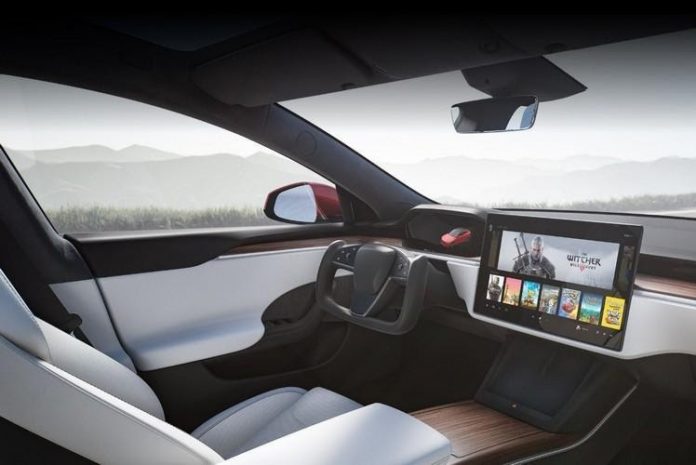
Technological advances continue to strike our minds, with new revolutionary inventions being made faster than ever in history. The auto industry is among the many sectors that benefit from these advancements. Cars have evolved from serving the sole purpose of taking people between places to machines of comfort, functionality, and entertainment all rolled into one.
Like how mobile phones evolved into smartphones, vehicles are now set to become smart cars. The increasing priority of clients in technologically advanced machines is making many automotive solutions a reality rather than science fiction only witnessed in films. We make an effort to identify some of the car technologies that are already in showrooms and those just around the corner.
Enhanced Gesture Control
A lot of car manufacturers are abandoning the use of buttons and knobs for touch-controlled infotainment systems. When they were introduced, they were pretty terrible. However, they have advanced at a pretty startling rate to incorporate multimedia computers that inform and entertain the car occupants. Each company has a unique system, with some superior to others. Some go beyond the use of a touchscreen to accommodate voice and gesture controls as well.
Tesla is currently the world leader in smart car infotainment systems and replaces all the knobs on the dashboard with a large screen. The screen executes commands like warming seats, opening the dashboard, and answering calls alongside online entertainment. Therefore, one will be able even to fire up their favourite casino games like slots, table games, or even online casinos like vulkan vegas from the comfort of their car. Since the system can be integrated with smartphone operating systems like iOS and Android, it is compatible with nearly all games that can be launched on PCs and mobile devices.
Electric Engines
The era of electric cars is upon us, with automakers adding more of these options to their lineup each year. This trend kicked off with Hybrid Electric Cars, and they dominate the roads over petrol engine cars today. While HEVs still draw power from internal combustion engines that depend on fossil fuels, they have at least one electric motor substitute. Popular hybrid vehicles include:
| Make | Model |
| Toyota | Toyota Prius, Toyota C-HR Hybrid, Toyota Yaris Hybrid |
| Honda | Honda Insight, Honda Clarity Plug-In Hybrid, Honda Accord |
| Ford | Ford Fusion Energi, Ford Fusion Hybrid |
| Mercedes | S-Class Hybrid, GLC-Class Plug-In Hybrid, C-Class Plug-In Hybrid |
On the other hand, electric cars run entirely on electricity using a battery pack and electric motors. Both options’ fuel efficiency is considerably better than that of ICEs, even though their price range is higher. Tesla is currently the most prominent producer of EVs, with all its options running entirely on electricity.
While electric engines prove to be more efficient than conventional options, their batteries are still bulky. The next innovative step in this area is predicted to be sheet thin batteries, and some companies have already started rolling out prototypes. The batteries will be hidden in plain sight on cosmetic parts of the vehicle, such as the hood, roof, and doors.
Self-Driving Cars
Fully autonomous vehicles are still inaccessible to ordinary users. Still, leading names in the tech worlds have achieved vehicle models that can run on their own for some time without the person behind the wheel controlling them. The idea behind these cars is relatively simple: build a car with smart cameras that keep track of objects around the vehicle and make it react by steering away or stopping if it is about to run into one.
In-car computers are still ways away from making judgement calls like recognizing who has the right of way or weather conditions. Nonetheless, they function autonomously on pre-mapped highways and ramps. Others are fitted with self-parking technology that allows them to identify free spots and drive themselves to the owner once they are ready to leave. Vehicles that are almost self-driving include:
- Tesla Model S
- BMW S7
- Infiniti QX50
- 2021 Toyota RAV4
- Volvo XC60
Driver Override Systems
This technology is a form of autonomous driving that is widespread with modern cars, but it is slightly different from self-driving. Instead, it allows cars to disregard the owner’s commands and making decisions according to the circumstances. Today, it is possible to find cars that will halt if the user fails to apply the brakes. Carmakers are advancing this tech in the 2020s, where the vehicle will stop even if the driver has the gas pedal to the floor if it seems like a danger as per the car’s assessment. Such sensor technology will give the car final say and not the driver, which will reduce accidents and other mishaps on the roads.
Energy-Saving Tech
The masses are more driven to conserve the planet more than ever, and car manufacturers play their role in achieving the goal. Smart cars’ use of electric batteries alongside ICEs allows cars to use less gas, unlike when running entirely on fossil fuels. Cars like Tesla that rely on electric engines entirely record much lower emissions than hybrid and fuel-driven cars.
Communication Systems
With more smart cars filling the roads, manufacturers are looking to add technology to communicate with each other. This tech will promote smoother traffic and make the roads less congested. It can also be used to increase road safety by informing drivers of cars in their blind spots. The proper use of this technology could significantly increase road efficiency and safety for better driving experiences. Tesla has also announced its intentions to include a communication system for drivers to communicate with each other when within a close range.
Smart Integration
Smartphones are used in the billions worldwide, which makes their integration with cars the perfect next step. Currently, most cars can only complete simple tasks with mobile devices like playing music. Companies like Honda, Tesla, and Volvo are now starting to include technology that allows one to control their phone’s functionality using their vehicle. For instance, the Apple Siri Eyes Free feature in new Honda cars will enable drivers to run their iOS from their vehicle dashboard. That way, they can make and receive calls, send and receive messages, play music, and get directions from applications built into their Apple smartphones.
Augmented Reality Displays
Head-Up Display technology was first introduced more than 20 years ago, but it only featured washed-up green digits that were hard to see. This tech has come a long way since and evolved into high-end Augmented Reality Displays with vibrant images. Most companies are looking forward to improving vehicles’ functionality using the technology, such as displaying navigation details, speed, and other information on the windscreen to keep the driver’s eyes on the road.
Conclusion
Smart cars’ projected growth has many people’s brains awash with what the future holds in store. Companies like Mercedes, Chevrolet, Buick, and Volkswagen have lined up concepts with advanced features ways off. However, many of them are also just around the corner, while some are already changing transportation in the present.







